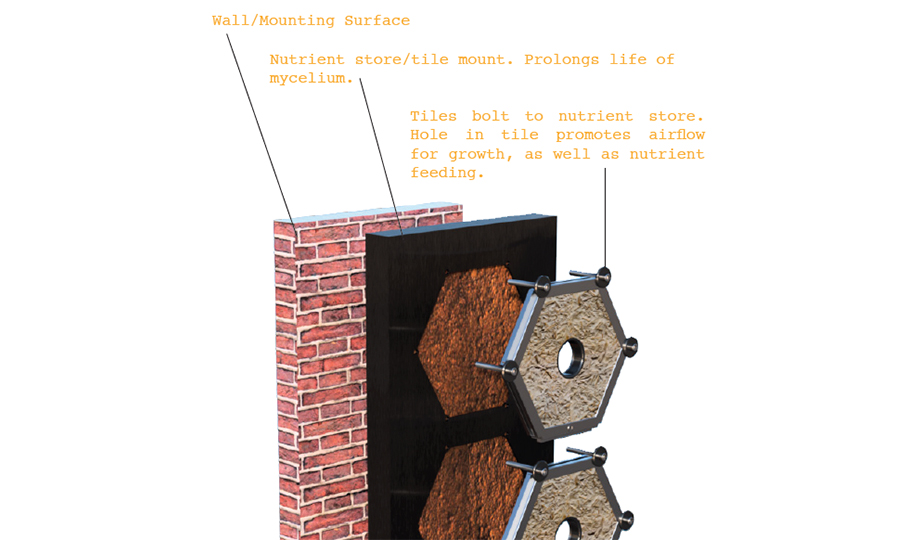Futuristic fungi-filled wall tiles could hoover up harmful hydrocarbon air pollution caused by traffic emissions and burning fossil fuels.
That’s the vision Brunel Design student Thomas Sault is close to achieving with these honeycomb tiles made from mycelium – the part of mushrooms you can’t see because they grow underground.
Cancer-causing hydrocarbons hovering round in the air upset the skin’s natural ability to detoxify – causing skin conditions, such as acne, psoriasis and even skin cancer.
Modular Myco-Hex tiles stuffed with an absorbent mix of waste sawdust and fungal spores may be an answer. Fungi can break down 80% of the carbon they absorb and turn it food to grow on. When the mycelium-fused fungi grows, it safely sponges up hydrocarbons, helping create cleaner air in towns and cities.
A Netflix documentary called Fantastic Fungi inspired final-year BA Industrial Design and Technology student Thomas, who was set the challenge of finding a fix for skin-damaging air pollution. “It opened my eyes to some of the amazing properties fungi have,” said Thomas, 21, from Romford. “I came across oyster mushrooms and how they can naturally clean up oil spills by breaking down hydrocarbons to use for energy.”
“Myco-Hex tiles are a great example of biomimicry,” said Brunel Design School lecturer, Ayca Dundar. “It is using nature to solve a global problem that is also fully sustainable and renewable.”

Newly unveiled as a prototype, Myco-Hex tiles use tongue and groove to click together. They are cheap to make, sound-proof, fire-retardant and can mount mostly anywhere outdoors, such as billboard hoardings or in school playgrounds. Besides sawdust, the mycelium could be fed food waste such as coffee grounds to keep them growing healthily.
“For so many years, humans have worked against nature and have slowly destroyed it,” said Thomas. “Instead of working against nature, we need to look to nature and see that it contains the answers to our environmental issues.”